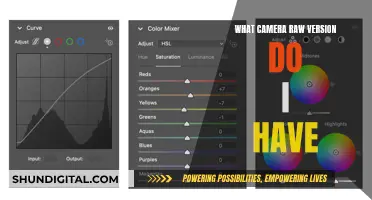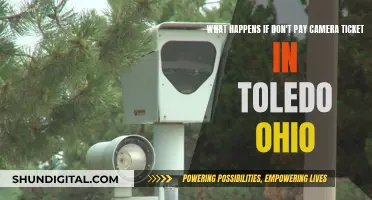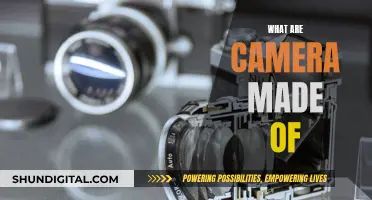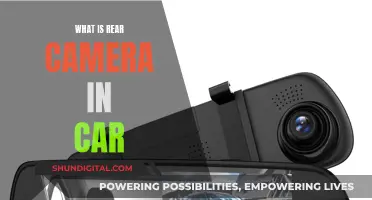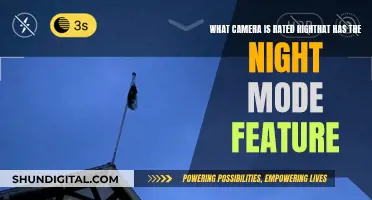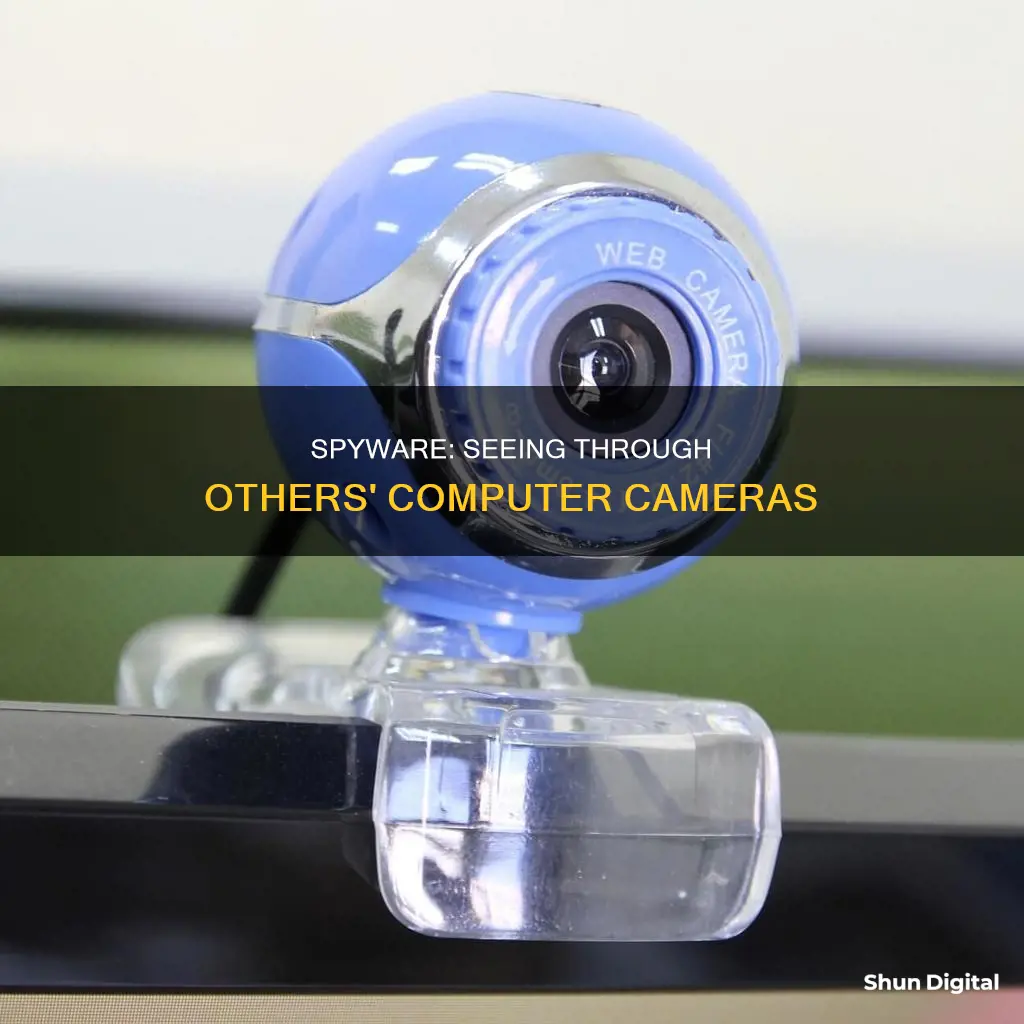
It is possible for people to see you through your computer camera without your consent. This is known as camfecting and is a common hack. Webcams and phone cameras can be hacked, giving malicious actors control over how they function. This means hackers can use your device's camera to spy on you and search for personal information. There are, however, steps you can take to prevent or identify this type of activity on your devices.
| Characteristics | Values |
|---|---|
| Can your device be hacked? | Yes |
| How can it be hacked? | Malware, spyware, phishing attacks, scareware, trojan malware |
| What can a hacker do with your device's camera? | Turn it on and off, look through it, take photos, listen in through the device's microphone |
| How can you tell if your device has been hacked? | Camera indicator light is on, strange behaviour from the camera, unfamiliar apps, photos or video files, poor video call performance, strange sounds in calls, high data usage, poor battery performance, device is warmer than usual |
| How can you prevent your device from being hacked? | Use antivirus software, don't click suspicious links, strengthen privacy settings, use a VPN, enable firewall |
What You'll Learn
- Webcam hacking, or 'camfecting', is possible through malware installed via phishing attacks
- A hacker can turn your camera on and off, take photos, and listen in through your device's microphone
- Modern devices use an indicator light or icon when the camera is active
- If your camera light is on or blinking when it shouldn't be, it could be a sign of hacking
- To prevent hacking, use antivirus software, avoid suspicious links and attachments, and cover your webcam

Webcam hacking, or 'camfecting', is possible through malware installed via phishing attacks
Webcam hacking, or camfecting, is a process where a hacker attempts to gain control of a person's webcam without their permission. This can be achieved through malware installed via phishing attacks. Phishing is a technique where hackers send emails with malicious attachments or links that, when clicked, install malware on the victim's device. This malware can provide the hacker with unauthorized access to the webcam, allowing them to capture photos or videos without the owner's knowledge.
Camfecting often involves tricking the victim into downloading and running a seemingly innocent application that contains hidden Trojan software. When the victim executes the application, the camfecting malware silently installs itself, granting the hacker control over the webcam. This enables them to activate the webcam, capture footage, and even access the webcam owner's field of vision, potentially violating their privacy.
To protect against webcam hacking, it is crucial to be cautious when dealing with suspicious emails, instant messages, or advertisements. Avoid clicking on links or opening attachments from unknown or untrusted sources. It is recommended to contact the organization directly through their official website rather than using any contact information provided in the email. Additionally, keeping software, web browsers, and security patches up to date can help prevent known vulnerabilities from being exploited by hackers.
Another simple precaution is to physically block the camera lens when it is not in use. This can be done by placing opaque tape over the lens or using external webcam covers. Some webcams also have built-in lens covers that can be closed when the camera is not in use. These measures ensure that even if a hacker gains access to the webcam, they cannot view or record anything.
It is worth noting that webcam hacking is not just limited to computers; any internet-connected device with a camera, such as mobile phones, tablets, or security cameras, can be targeted. Ensuring that these devices have strong passwords and up-to-date security settings can help reduce the risk of unauthorized access.
Surveillance Cameras: Watching Our Every Move
You may want to see also

A hacker can turn your camera on and off, take photos, and listen in through your device's microphone
It is possible for a hacker to gain access to your device's camera and microphone. Webcams and phone cameras can be hacked, giving malicious actors control over their basic functions. As a result, hackers can use your device's camera to spy on you, take photos, and listen in through your device's microphone.
Modern devices use an indicator light or icon whenever the camera is active. If you see this light appear at random, when you know that none of your trusted apps are using the camera, it might be a sign that your device has been compromised. On iPhones running iOS 14 or higher, for example, a green dot appears at the top of the screen when an app is using the camera. Similarly, computers have built-in features that indicate camera and microphone usage. Newer MacBooks, for instance, have a green light next to the camera when it's on, and a microphone icon in the status bar.
To protect yourself from camera and microphone hacking, you can take several precautions. One simple measure is to use laptop webcam privacy covers, small pieces of plastic that fit over your camera and can be slid open or shut. While closed, they prevent the camera from seeing anything, even if it's turned on. Another precaution is to turn off your laptop or phone when it's not in use, as a hibernating or "sleeping" device may still be vulnerable.
Additionally, it's important to keep an eye on your device's camera and microphone permissions. Disable permission for any apps that you don't want using your camera or microphone. On Android phones, go to Settings > Apps > Permissions Manager > Camera, and on iPhones, go to Settings > Privacy > Camera. Revoking unnecessary permissions and regularly reviewing them can help enhance the security of your device.
By following these steps and staying vigilant, you can help protect your privacy and security from potential camera and microphone hacking.
Sabotaging Surveillance Cameras: Effective Ways to Try
You may want to see also

Modern devices use an indicator light or icon when the camera is active
Modern devices like Android 12 and MacBooks have implemented measures to ensure that users are notified when their device's camera is active. This is done through the use of indicator lights or icons.
Android 12, for example, has introduced a feature where a camera or microphone icon appears in the top right corner of the screen when an app is using the camera or microphone. This ensures that users are aware of any potential spying or unauthorised access. The OS also includes a privacy dashboard, which allows users to track when and which apps have accessed sensitive information, such as the camera and microphone.
Similarly, MacBooks have a green "camera light" that turns on when the camera is activated. According to an Apple engineer, the hardware team tied the LED to a hardware signal from the sensor, ensuring that the light turns on when the camera is active. This provides users with a visual indication of their camera's status.
While these indicator lights and icons are designed to protect user privacy, it is important to note that they may not always be effective. A study found that many computer users do not notice the indicator lights, and even fewer realise that the camera is recording when the light is on. This lack of awareness can make people more vulnerable to webcam spying. Therefore, it is recommended to use additional measures, such as placing a sticker over the webcam and using antivirus software, to ensure privacy and security.
OS Compatibility for Cobra Surveillance Wireless DVR Cameras
You may want to see also

If your camera light is on or blinking when it shouldn't be, it could be a sign of hacking
If your camera light is on or blinking when it shouldn't be, it could be a sign that your device has been hacked. This is one of the most common indicators of a hacked webcam, as the camera light is usually hardwired to the camera itself. However, it's important to note that in some cases, the LED light is managed by firmware, which could allow someone to turn on your webcam without activating the light.
If you suspect that your webcam has been hacked, there are several steps you can take to investigate and protect yourself:
- Reboot your device and launch your browser: If the camera light turns on as soon as you open your browser, the issue is likely caused by a browser extension. Try disabling your extensions one by one to identify and uninstall the culprit.
- Check your applications: Open each application one by one and observe if the camera light turns on. If a particular application triggers the camera light, it may be using your webcam without your knowledge.
- Review your webcam recordings folder: Webcam hackers often don't bother to hide their activities. Check your webcam recordings folder for any strange or unfamiliar video files. If you find recordings that you don't remember making, it's a strong indication that your webcam has been compromised.
- Examine your active processes: Reboot your computer and open the Task Manager (or Activity Monitor for macOS users). Observe if any processes are consuming a lot of resources right after the reboot. If you spot a suspicious process, it could be malware.
- Run a malware scan: Use a reliable antivirus program to perform a full system scan. This will help detect and remove any malicious software that may be accessing your webcam without your consent.
- Cover your webcam: As a temporary measure, you can physically cover your webcam with tape or a sticker until you're able to remove any malware or resolve the issue. This will prevent anyone from spying on you through your webcam, even if they have gained unauthorized access.
- Change your passwords: If your webcam has been hacked, it's possible that your passwords have been compromised. Change your passwords immediately, especially for any accounts associated with your webcam or device. Use strong, unique passwords that include a combination of uppercase and lowercase letters, numbers, and special characters.
- Update your software: Keep your operating system, antivirus software, and all applications up to date. Regular updates often patch security vulnerabilities, helping to prevent unauthorized access to your webcam and other device features.
- Be cautious of suspicious links and emails: Be wary of clicking on links or downloading attachments from unknown senders. Phishing schemes are a common method used by hackers to trick users into installing malicious software that can provide access to their webcams and personal data.
- Use a virtual private network (VPN): A VPN can help secure your network connection and protect your online communications. It encrypts your data, conceals your IP address, and safeguards your privacy when using public Wi-Fi, making it more difficult for hackers to infiltrate your devices.
Exploring the E-M10 Mark II: Does It Offer RAW Photography?
You may want to see also

To prevent hacking, use antivirus software, avoid suspicious links and attachments, and cover your webcam
Webcam hacking, or "camfecting", is when an unauthorized user accesses your webcam without your consent. This can be done by exploiting vulnerabilities in legitimate apps, programs, or devices, or by tricking users into downloading malware from phishing links, email attachments, or compromised websites. Once a webcam is hacked, hackers can turn it on and off, watch and record footage, and even access your microphone.
To prevent webcam hacking, it is important to take a multi-layered approach:
Use Antivirus Software
Antivirus software detects and removes viruses, spyware, and other malware that hackers use to gain access to your webcam. Regularly scan your device and always act on any alerts or notifications from your antivirus software. Keep your antivirus software up to date to ensure you have the best protection.
Avoid Suspicious Links and Attachments
Be very cautious when clicking links or opening attachments, especially in emails or messages that seem suspicious. Look out for signs such as grammatical errors, a sense of urgency in the message, or a strange sender's email address. Instead of clicking or opening, delete the message and run a full scan with your antivirus software.
Cover Your Webcam
A simple yet effective method is to physically cover your webcam when not in use. You can use a webcam cover, a piece of tape, or even a sticky note. While this won't prevent all forms of hacking, it will stop hackers from being able to see through your webcam.
Additionally, it is important to keep your computer and apps up to date, use strong passwords, and be cautious when granting permissions to apps. By following these precautions, you can significantly reduce the risk of webcam hacking and protect your privacy and security.
Blind Your Neighbor's Surveillance Camera: Quick and Easy Methods
You may want to see also
Frequently asked questions
There are several signs that your webcam may have been hacked, including:
- The camera indicator light is on or blinking when you haven't turned the webcam on.
- Strange sounds during phone calls, such as a camera shutter, static, clicking, or echoes, which could indicate that someone is listening in or recording your call.
- Your camera exhibits strange behaviour, such as third-party camera apps opening on their own or the camera running slowly and crashing frequently.
- Your device is using more data than usual, which could be due to malicious apps running in the background.
Webcam hacking, also known as "camfecting", is a process of remotely accessing a camera by distributing malware through phishing attacks. Hackers can also disguise themselves as support agents and contact you about an issue with your system, tricking you into downloading remote-access software.
There are several measures you can take to protect your webcam from being hacked:
- Use a reliable antivirus program with advanced protection against malware, spyware, and viruses.
- Avoid suspicious links and attachments, and be cautious about downloading third-party apps.
- Strengthen your privacy settings by limiting app permissions, using strong passwords, and enabling two-factor authentication.
- Use a VPN to secure your Wi-Fi connection and protect yourself from unwanted snoopers, especially when using public Wi-Fi.
- Physically cover your webcam with tape or a sliding cover when not in use.


